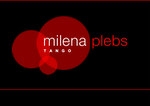
Es recurrente que en las clases de tango los alumnos manifiesten que otros profesores les explicaron tal o cual detalle técnico del baile de manera diferente a lo que se acaba de explicar.
It is a recurring event in tango classes for students to declare that other teachers explained some or other technical detail of the dance in a different way to what was just explained.
See english translation below
Los alumnos son normalmente muy apasionados y puede pasar que se angustien al recibir indicaciones, que hasta pueden parecer opuestas, de diversos maestros con los que toman clases. No saben qué hacer y lo plantean hasta con enojo, a veces. Es un tema muy complejo pues, en un nivel de aprendizaje básico, al alumno le cuesta comprender esta situación que se da en los bailes populares y quizás en el tango más que en otras danzas.
El tango nace de la tradición popular ciudadana y no tiene patrones fijos. No hay una técnica específica, ni una sola manera de hacer los pasos. Ni una única postura o estilo. Hay tantos estilos como personas que bailan. Se pueden identificar grandes grupos, grandes corrientes. Lo que digo en mis clases es que todo lo que enseñan los buenos maestros, no importa a qué corriente pertenezcan, es válido. Sugiero que experimenten diferentes formas, frecuenten diversos maestros y luego trabajen para hacer su propia síntesis.
Para mí, lo más entretenido del tango es la diversidad. Es bueno tener una actitud de apertura y juego a la hora del aprendizaje. Tomar de cada maestro lo que entrega, para lo cual se preparó durante años, y aceptar que puede recibir indicaciones sobre un mismo tema que parecieran ser contradictorias entre un profesor y otro. Esto no es malo, es así. No hay dudas de que cada docente ofrece lo mejor que desarrolló en su carrera profesional. No existe una verdad absoluta por que cada enseñante tiene “su” verdad absoluta.
Hace unos veinte años, Miguel Zotto juntó a unos cuantos maestros y milongueros en el Club Sin Rumbo. La propuesta era codificar el baile del tango, y así unificar la enseñanza, definiendo los distintos tipos de salidas, desarrollos y resoluciones básicas. Fue imposible porque cada uno defendía su forma. El tango es pasional, visceral, y esta intensidad es una de sus más notables características.
Estamos acostumbrados a que en el aprendizaje de cualquier disciplina nos digan exactamente lo que hay que hacer y, en general, hay un acuerdo de formas y estructura. En el tango no hay una estructura base única. Hay disponibles unos cuantos elementos y la creatividad que cada uno le ponga. Es saludable tomar un rol activo en el aprendizaje, buscando, probando y analizando lo que se aprende. Un desafío a transitar. •
Copyright © El Tangauta 2008
Multiple truths
The students normally are very passionate and it can happen that they become distressed upon receiving indications that can even seem opposite from the diverse teachers that they take classes from. They do not know what to do and it even makes them angry at times. It is a very complex subject because, at the level of basic learning, it is difficult for the student to understand this situation that happens in popular dances and perhaps in tango more than in other dances.
Tango is born of the urban popular tradition and does not have fixed standards. There is no specific technique, or single way to do the steps. Nor is there a unique posture or style. There are as many styles as are people who dance. Large groups and currents can be identified. What I say in my classes is that everything that is taught by good teachers, it does not matter to what current they belong, is valid. I suggest that they experience different forms, go to diverse teachers and then they work to do their own synthesis.
For me, what is most enjoyable about tango is its diversity. It is good to have an open and playful attitude at the moment of learning. To take from each teacher what he delivers, for which he has prepared for years, and to accept that one can receive from different teachers indications on a same subject that seem to be contradictory. This is not bad, it just is. There is no doubt that each teacher offers the best than he has developed in his professional career. There is no absolute truth because each teacher has “his” absolute truth. Some twenty years ago, Miguel Zotto gathered a few teachers and milongueros at the Club Sin Rumbo. The purpose was to codify the dance of tango, and thus to unify its teaching, defining the different types of salidas, developments and basic resolutions. It was impossible because each one defended his way. Tango is passionate, visceral, and this intensity is one of its more notable characteristics.
In the learning of any discipline, we are accustomed to be told exactly what one must do and, in general, there is agreement about forms and structure. In tango there is not a unique base structure. There are a few elements available plus the creativity that each one puts into them. It is healthy to take an active role in learning, seeking, testing and analyzing what is learned. It is a worthy challenge to traverse. •
Copyright © El Tangauta 2008
Publicado en El Tangauta - EDICION nro 159
Traducción: Dolores Longo.






No hay comentarios:
Publicar un comentario